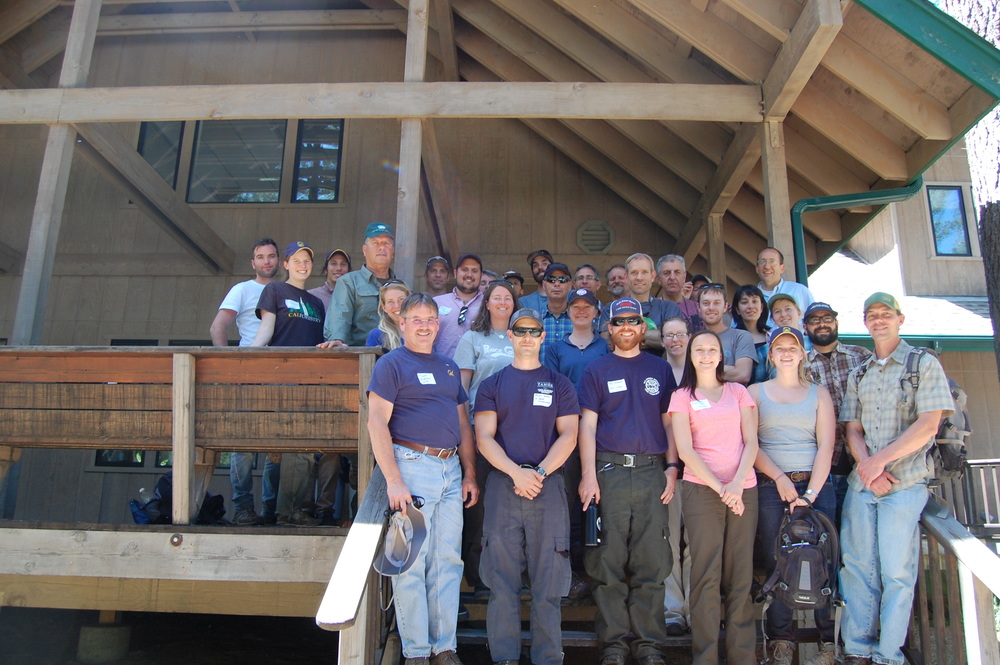Managing Forests for Future Resilience: Field trip summary
/By Stacey Sargent Frederick
California Fire Science Consortium Program Coordinator
ssfrederick@berkeley.edu
On May 14, 2014 a diverse group gathered to visit sites throughout the UC Center for Forestry’s Blodgett Research Forest. The “Managing Forests for Future Resilience” field trip sponsored by the California Fire Science Consortium featured a variety of forest treatment activities that could be used to promote forest resilience. The treatment activities were implemented and monitored with the results on this handout. You can also check out the map of the sites. The field trip was joined by a group of foresters from Israeli which prompted some interesting discussions throughout the day.
Resilience
So what is resilience? During the first site visit, this concept and its application were described. Beyond being a popular buzz-word of the day, it’s a way of thinking about how much a forest system can change and still be a forest; a forest with similar functions and characteristics. For example, a severe fire could convert that a non-resilient forest into a shrubland. However, fuel reduction may create a more resilient forest that will still burn, but will remain a functional forest. The analogy of “a ball in a trough” was discussed (for a quick explanation of resilience, watch this video).
History
Around 1915, areas of this forest were “blitzed” logged using a railroad system constructed for the purpose. This was a common logging practice during this time in the Sierra Nevada area. In some areas, as few as six trees per acre were left.
Then came the era of fire suppression, which created the overly dense forests and heavy fuel loads (estimated: 35 tons/acre) in fire prone ecosystems. This fuel situation now creates high fire risk for human resources and forest ecosystem functions in some cases.
Discussion points and take-home message from each site
Control:
With no treatment and no wildfires, the forest regenerated to a very high stocking level. With over 450 trees per acre currently on the site. The biomass in these areas continues to increase over time despite some mortality and fuels continue to accumulate in the understory.
The importance of surface fuels on fire behavior was strongly stressed here. The risk that any wildfire in the area would kill most of the trees continues to increase from these fuels and fuel ladders formed by all the suppressed trees.
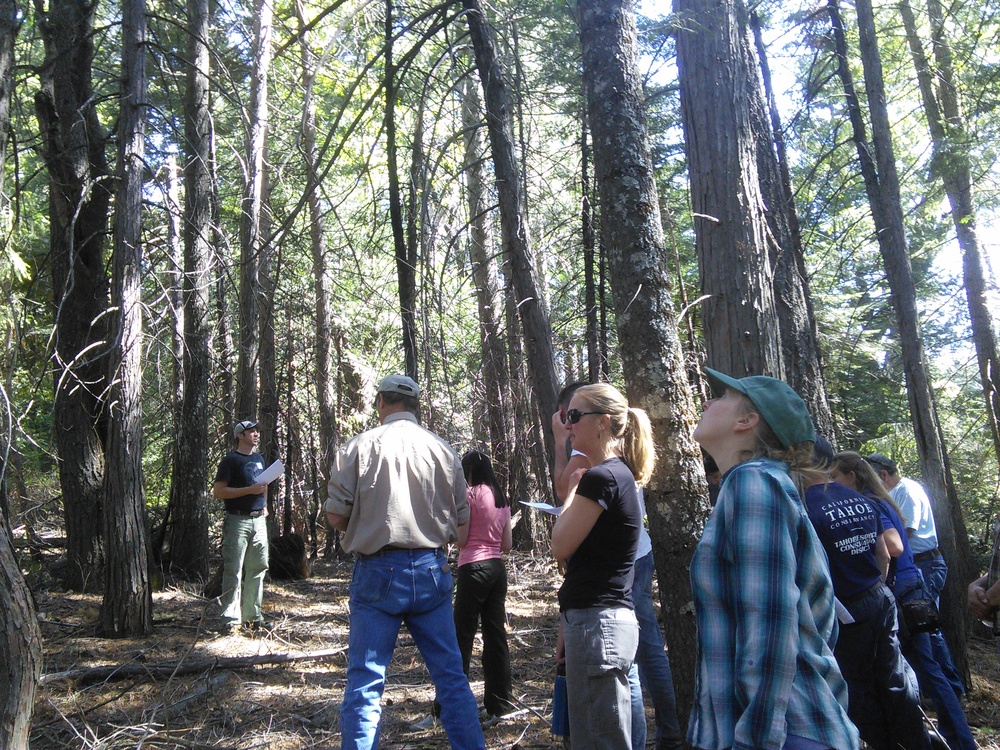
Mechanical only:
This treatment removed merchantable logs with a feller – buncher. Then a large piece of machinery (masticator) ground up sub merchantable material with diameter less than 10 inches into smaller chips.
The “mechanical only” treatment seemed to be the biggest winner of all the treatment types. Though a lot of material was removed, growth of biomass on the site (mostly in larger trees) continues to increase . Masticated material was very deep on the site (at least 18 inches deep in some areas) but was almost completely decomposed within 7 years, further reducing the fire risk. The moisture and fungi at this site were unusual for the region, causing faster chip decomposition than may be found in some areas of the Sierra Nevada.

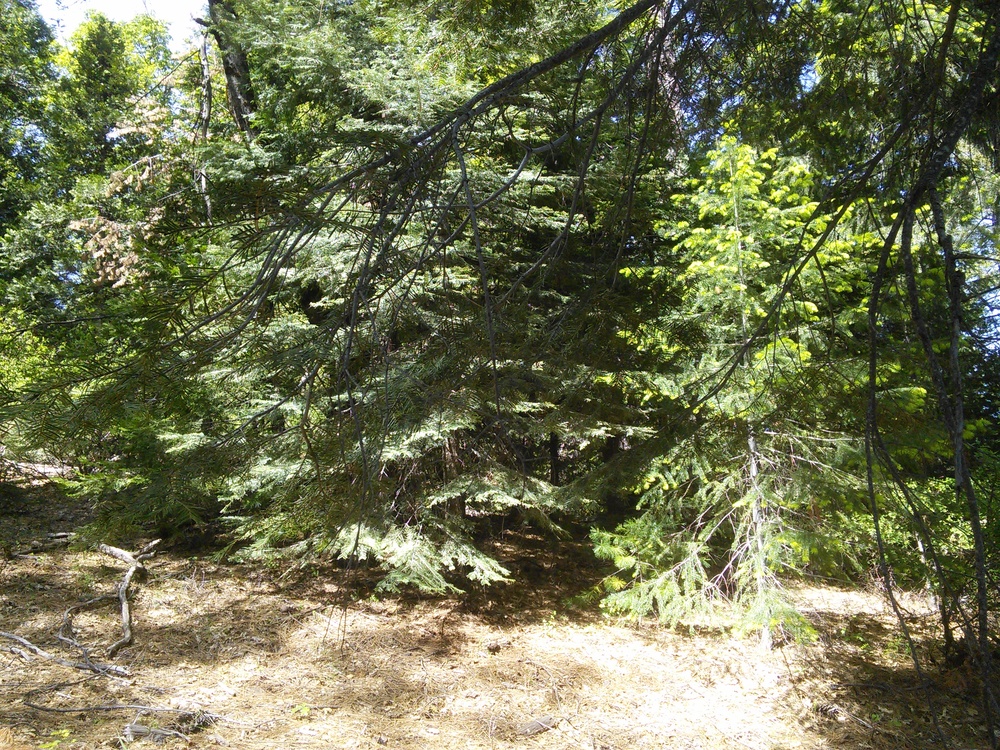
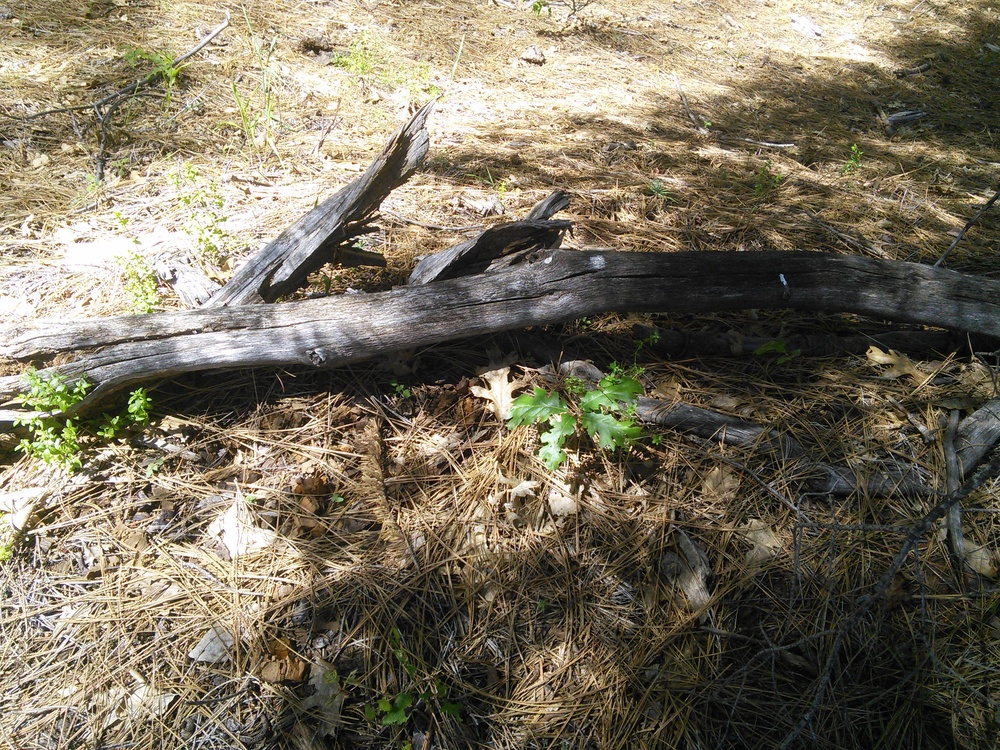
Mechanical and prescribed burn site:
This treatment involved similar harvest as the mechanical site (with removal of logs and mastication of sub-merchantable material), but then the remaining activity fuels were burned within the same year. Because of the deep layer of masticated material, the fire was quite hot, with 6 foot high flames, and long fire residence times which scorched tree cambiums causing higher than desired tree mortality (especially to oaks). Tree vigor had not recovered at this site and biomass was not increasing. If researchers were to redo this treatment, they would wait several years between treatment and burning to allow the slash and masticated material to decompose and reduce prescribed fire intensity.
The shrub regeneration was extraordinary here. The group had a discussion on the pros and cons of shrub regeneration. While shrubs are additional fuel and can increase fire risk (especially as they mature) they provide important wildlife habitat and forest diversity.
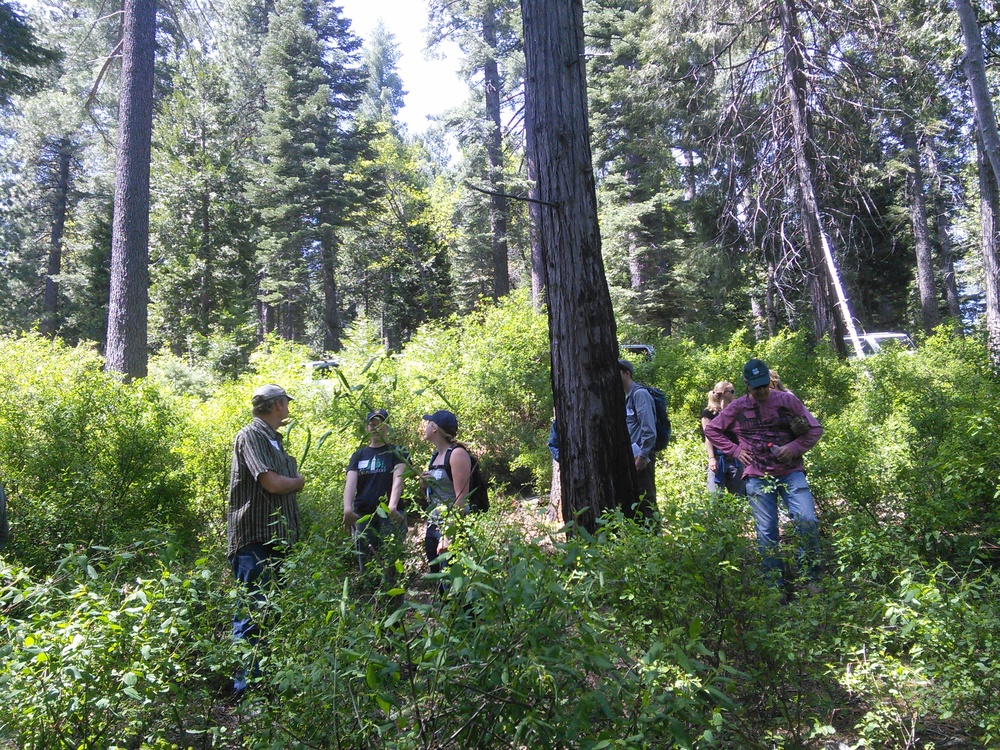
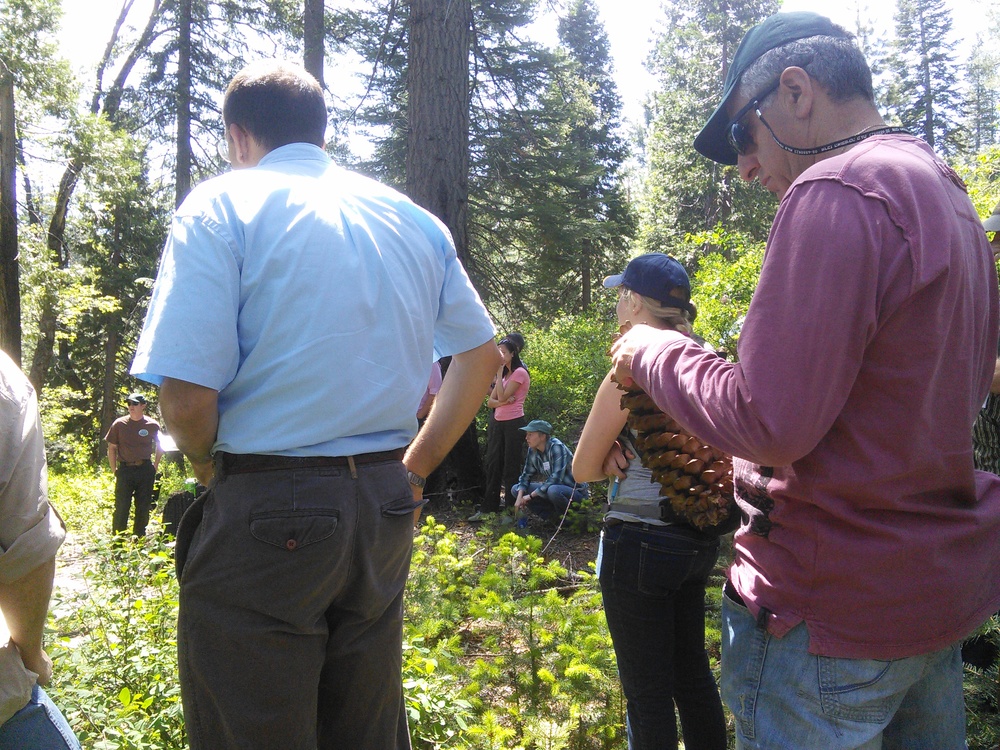
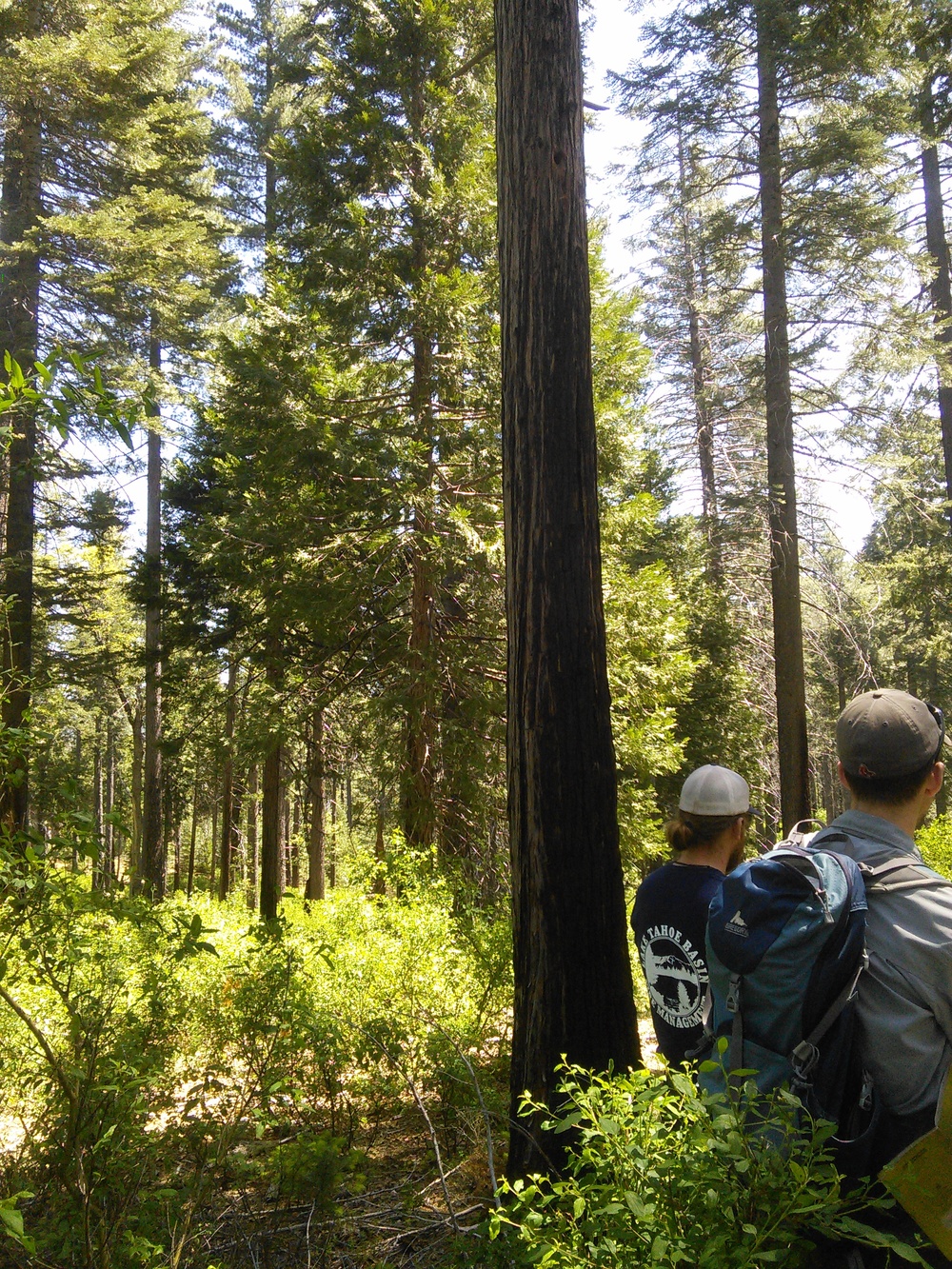
Prescribed burn only:
The prescribed fire only treatment was burned twice, once in 2002 and again in 2009. “Putting a fire in the first time isn't restoration, its reclamation” said Scott Stephens, fire science professor at UC Berkeley and the study’s lead investigator. The first fire killed some of the standing trees. The second consumed the fire-killed trees that had fallen to the ground by that time. The second burn is more like restoration. Even though the tree vigor might be reduced by fire, it may be worth the price to lower risk.
A discussion of grazing as part of the fuel reduction was prompted by the herd of cattle chased off during this site visit.
Knowing the season and type of day to burn is vital to attaining the desired result.
 The "prescribed burn only" area was burned twice during the treatments and made a great spot for lunch.
The "prescribed burn only" area was burned twice during the treatments and made a great spot for lunch.
Slash burn pile and biofuel:
Blodgett forest managers worked with Placer County Air Quality to monitor the emissions from this massive slash pile burn. This showed that black carbon (one of the most damaging forms of emissions to climate change) was being released.
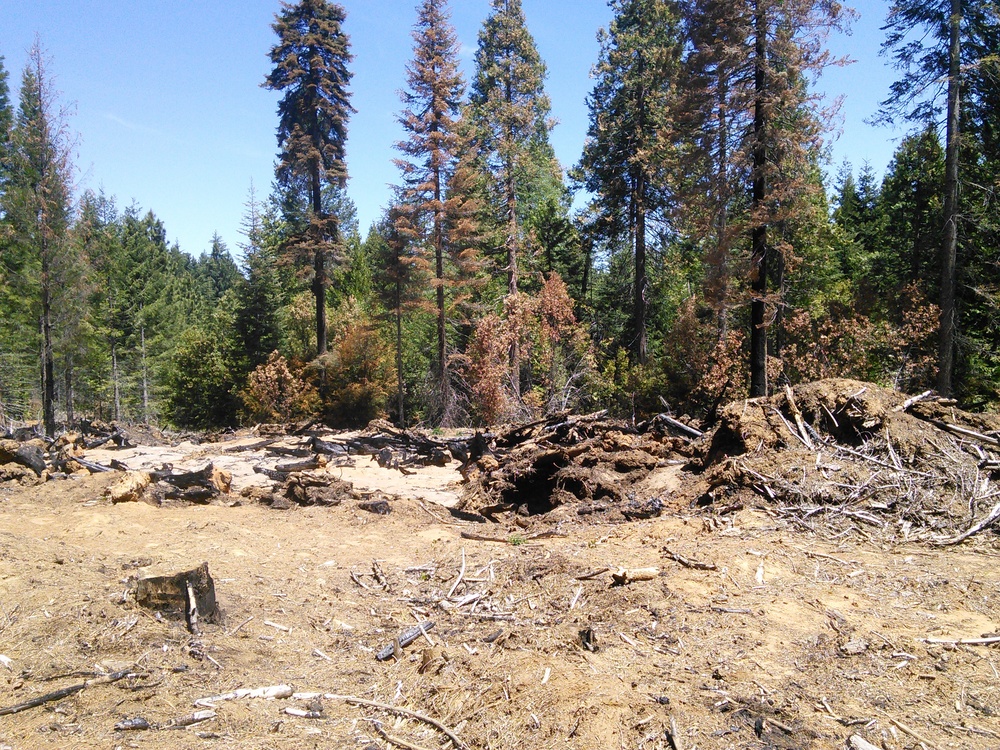
Five other fuels piles were instead taken to a biofuel plant. The benefits and issues with biofuel were documented in a study commissioned by Placer County:
Over 40 homes worth of energy was generated and the emissions (including black carbon) from the biofuel plants were far lower than a pile burn.
The drawback is the cost of getting the material to the plant. To break even, biofuel plants need to be within 20-30 miles from the treatment site, this slash was sent to one over 75 miles away.
Ways to subsidize the cost were discussed and the need for market mechanisms to encourage biofuel use of fuel reduction activities.
This short video describes the outcome of the bio fuel and smoke emissions project.
Conclusion: Which forest treatment is the best?
The answer is….
….it depends (you probably saw that coming). Most treatments kept the forest as a functioning ecosystem (created resiliency) and successfully reduced fuels. With each of these alternatives, other considerations such as cost, management objectives, time between treatments, site constraints, public opinion, etc. would factor into the determination of a “best” treatment.
